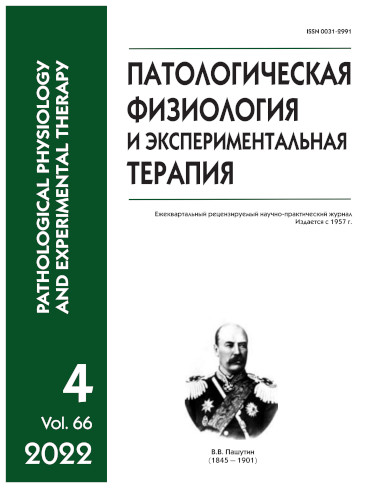The effect of xenon exposure duration on the volume of ischemic brain injury in experiment
Abstract
The development of new approaches to treatment and prevention of acute ischemic damage to the central nervous system remains relevant due to the increasing incidence of stroke and traumatic brain injury in the population. The aim of this study was to evaluate the effect of the duration of xenon 0.5 MAC inhalation on the volume of lesion and cerebral edema in experimental stroke. Methods. The study was performed on 70 rats by modeling focal ischemia-reperfusion by the Long method with subsequent inhalation of xenon 0,5 MAC for 30. 60 or 120 minutes. Magnetic resonance imaging and scanning of brain sections stained with 2,3,5-triphenyltetrazolium chloride (TTC) were used to assess the degree of brain damage. Results. According to the tomography data, the 30-min exposure to xenon 0.5 MAC decreased the volume of the ischemic stroke focus by 17% (p=0.07) and the volume of perifocal cerebral edema (p=0.065) by 15% compared to the control group; a 60-min exposure induced decreases by 27 (p=0.03) and 25% (p=0.025); and a 120-min exposure induced decreases by 30.6% (p=0.045) and 30.6% (p=0.045), respectively. The results obtained with the TTS staining demonstrated a decrease in ischemic stroke produced by the xenon 0.5.MAC exposure of increased duration. Conclusion. The study showed a neuroprotective effect of a 60-min exposure to xenon 0.5 MAC, which makes it promising for further study in clinical practice. Increasing the exposure time to 120 min does not enhance the neuroprotective effect of xenon.






